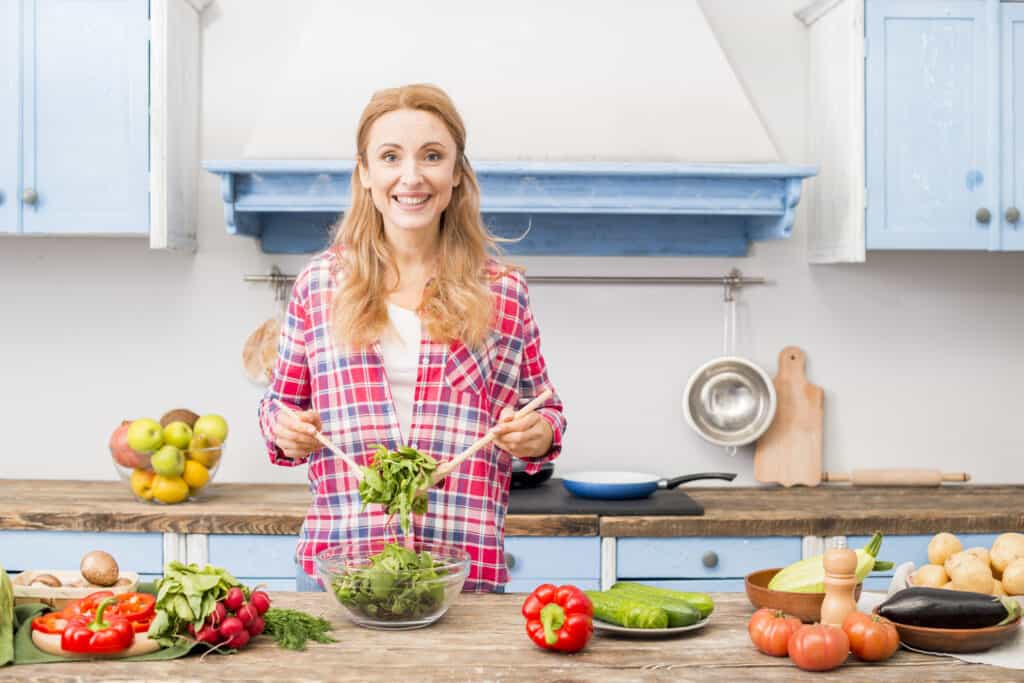As many as 1 in 10 Americans are not getting the recommended amount of fruit and vegetables each day. The Centers for Disease Control & Prevention (CDC) recommends we consume an “average” of about 2 1/2 cups a day for both fruits and vegetables. If that number reaches 3 cups a day on the vegetable side, even better. Further, how do you begin to choose the best fruits and vegetables to eat from the many options available? By looking at the nutrient density of each.
Powerhouse Fruits and Vegetables
The CDC has already ranked all fruits and vegetables by their nutrient density for you. Nutrient-dense foods are rich in nutrients relative to their calorie content. What wasn’t a real surprise was the fact that the top fifteen foods on that list are green vegetables. The number one spot went to watercress, followed by Chinese cabbage, chard, beet greens, and my personal favorite spinach.
Some of the most nutrient-dense fruits that made the list were Lemon, Lime, Strawberries and Oranges. For a complete list of the top 41, see table 2, found here. Eating 2 1/2 cups of fruit a day is smart because it’s loaded with vitamins, minerals, antioxidants, and fiber. Fruit also contains natural sugar versus added sugar that is found in high processed foods, sports drinks and candy. There were a few surprises that did not make the CDC list however; including, raspberry, tangerine, cranberry, garlic, onion, avocado, and blueberry.
Healthy Nutrient-Dense Options: Vegetables & Fruits
- Beet Greens
- Spinach
- Leaf Lettuce
- Kale
- Red Pepper
- Arugula
- Broccoli
- Brussel Sprouts
- Cauliflower
- Carrot
- Lemon
- Lime
- Strawberry
- Orange
- Grapefruit (white, pink & red)
- Blackberry
If You Had to Eat Only One…
On the vegetable side it might be spinach which many nutrition experts agree is a great choice. It’s so healthy because of the nutrient makeup it would be really hard to pass up on. Green leafy vegetables provide more more nutrients than just about any other food on earth! One cup of raw spinach provides 56 percent of your daily vitamin A needs not to mention your entire daily vitamin K requirement — and it contains only 7 calories. Now you know why it’s a staple in so many salads at lunch time. One study in adult women showed the more spinach women ate, the lower their incidence of breast cancer.
In contrast, on the fruit side, a good option would be an orange. Eating an orange is better than drinking orange juice. You get 3.4 grams of fiber in a whole orange, which has 69 calories and 12 grams of natural sugar. In addition, oranges are loaded with vitamin C (64 mg) and considered a premier antioxidant, according to Johnny Bowden, PhD, CNS. Oranges also have “more than 170 cancer-fighting phytochemicals, and 60 flavonoids,” making it a perfect choice before or after a workout.
In order to increase your chances of maintaining a strong, healthy body, make sure you have multiple servings of fruits and vegetables in your diet each day. Eat Smart and Stay Strong!
Reference
Bowden, J., The 150 Healthiest Foods on Earth, Fair Winds Press, 2007.
Stay Strong Together
Jefit, named best strength app by Sports Illustrated, Esquire, GQ, Men’s Health, Greatest, Forbes Health, and many others. It offers a community responsible for 92,000,000 workouts to date! The app, which recently passed 10 million downloads, comes equipped with a customizable workout planner and training log. The app has ability to track data, offer audio coaching cues, and can share workouts with friends. Visit our members-only Facebook group. Connect with like-minded people, share tips, and advice to help get closer to reaching your fitness goals.
- Fibermaxxing: Viral Nutrition Trend You Should Know - December 17, 2025
- Hybrid Metabolic Strength Training for Faster Results - December 10, 2025
- Why Lifters Choose JEFIT App for Real Strength Gains - December 3, 2025
